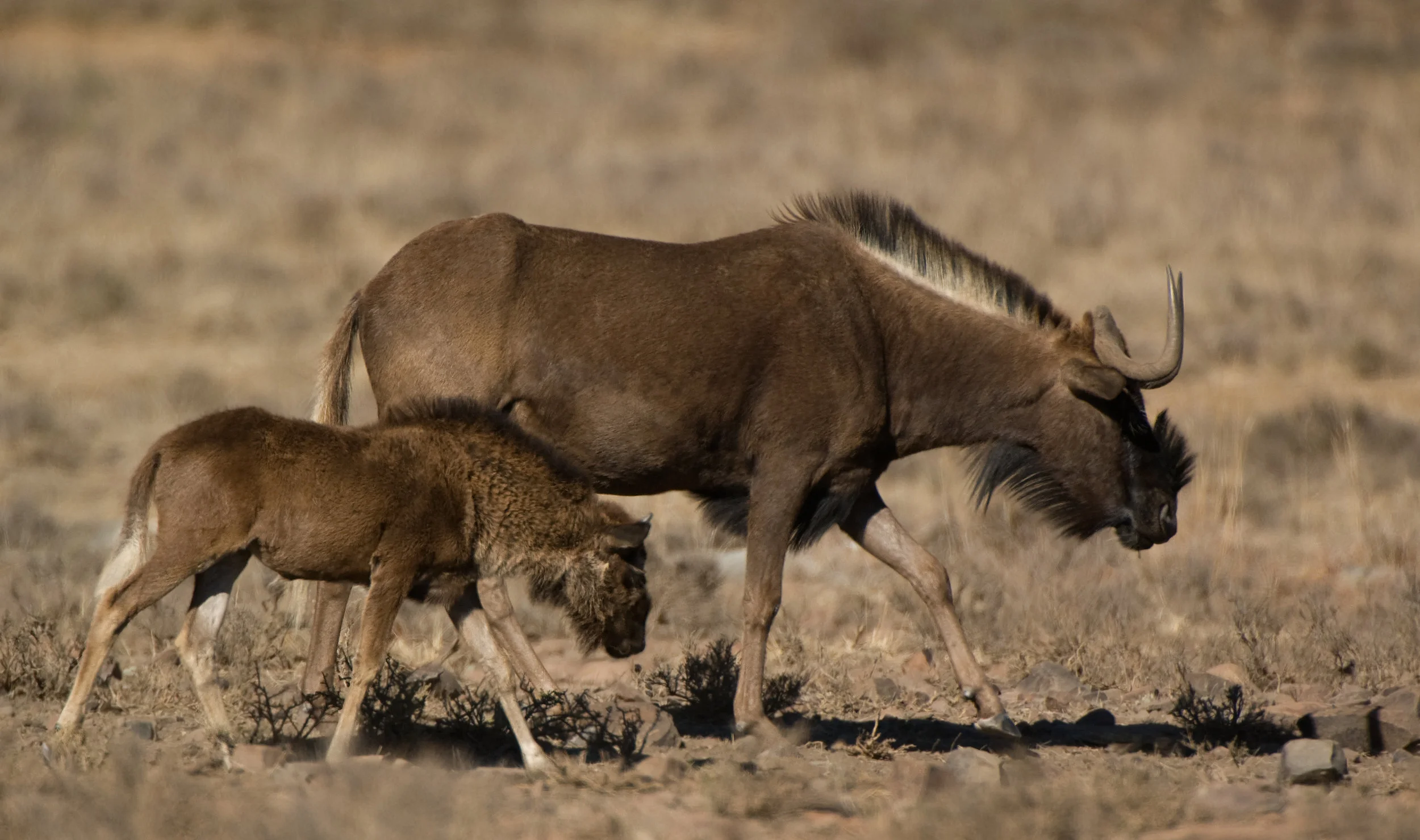Black Wildebeest
"The White-tailed Gnu" by Terryl Whitlatch (pencil, Copic sketchmarkers, digital photocopier, digital)
“When we think of antelopes, most of the time we envision a graceful, deer-like animal. But one of my most favorite antelopes is the odd, even bizarre, White-tailed Gnu (sometimes called the Black Wildebeest). It is actually quite small, no taller than a Shetland pony, and so funny to behold, with its bristle brush forehead, whiskers, and jutting horns, so proportionally out of whack compared to its skinny little body. Indeed, it’s only claim to beauty is its flowing white tail, which it swishes to great abandon as it bucks and prances across the South African veldt. They are a great deal of fun to watch as they play, and if you have a chance to see them, whether protected in their homeland or conservation parks like the San Diego Safari Park, you won’t be sorry.”
Your purchase is helping Expedition Art and Saving Species purchase land in Sumatra! Learn more about the project.
Habitat
The black wildebeest lives in Africa, within the boundaries of South Africa, Swaziland and Lesotho. They live on open plains, grasslands and shrublands.
Family Life
The black wildebeest is differentiated from the blue wildebeest by its white tail (hence its nickname, the white-tailed gnu). The characteristic “ge-nu” call of the male wildebeest also contributes to this alternative name. Adult male black wildebeest are highly territorial and will defend groups of females called harems in order to maintain their dominance and mating viability. Offspring are born once per year and are weaned after four months. Male wildebeest do not participate in rearing their young.
Lifespan
The black wildebeest can live for around 20 years.
Hunting Habits/Diet
Black wildebeest are primarily grazers. Grass makes up nearly all of their diet, though they will also eat shrubs and herbs. Preferentially eating shorter grasses, the black wildebeest will orient itself to avoid more mature, and therefore longer, grasses. They can go several days without drinking water if necessary.
Population
There’s an estimated 18,000 black wildebeest.
Fun Fact
The black wildebeest is also known as the white-tailed gnu. They are extremely fast runners, reaching speeds of around 80 kilometers per hour. Males cannot breed without unobstructed views of their territory.
Why are they Endangered?
Historically, black wildebeest were nearly driven to extinction through hunting, habitat loss and disease. Luckily, their populations were recovered through aggressive conservation efforts. Currently, the only significant threats to the black wildebeest are hybridisation with blue wildebeest and the lack of genetic diversity in some populations.
Status
Least Concern


